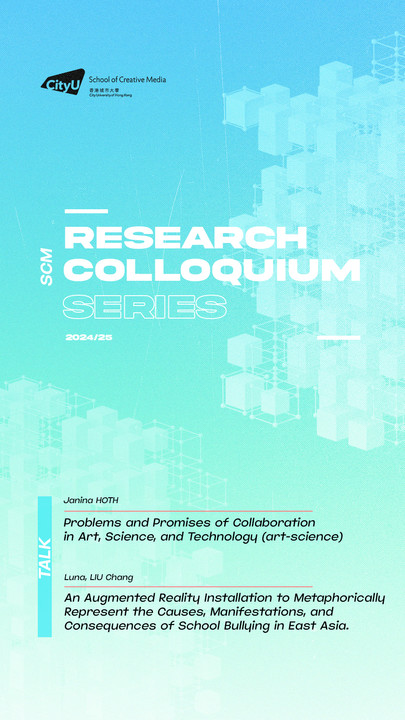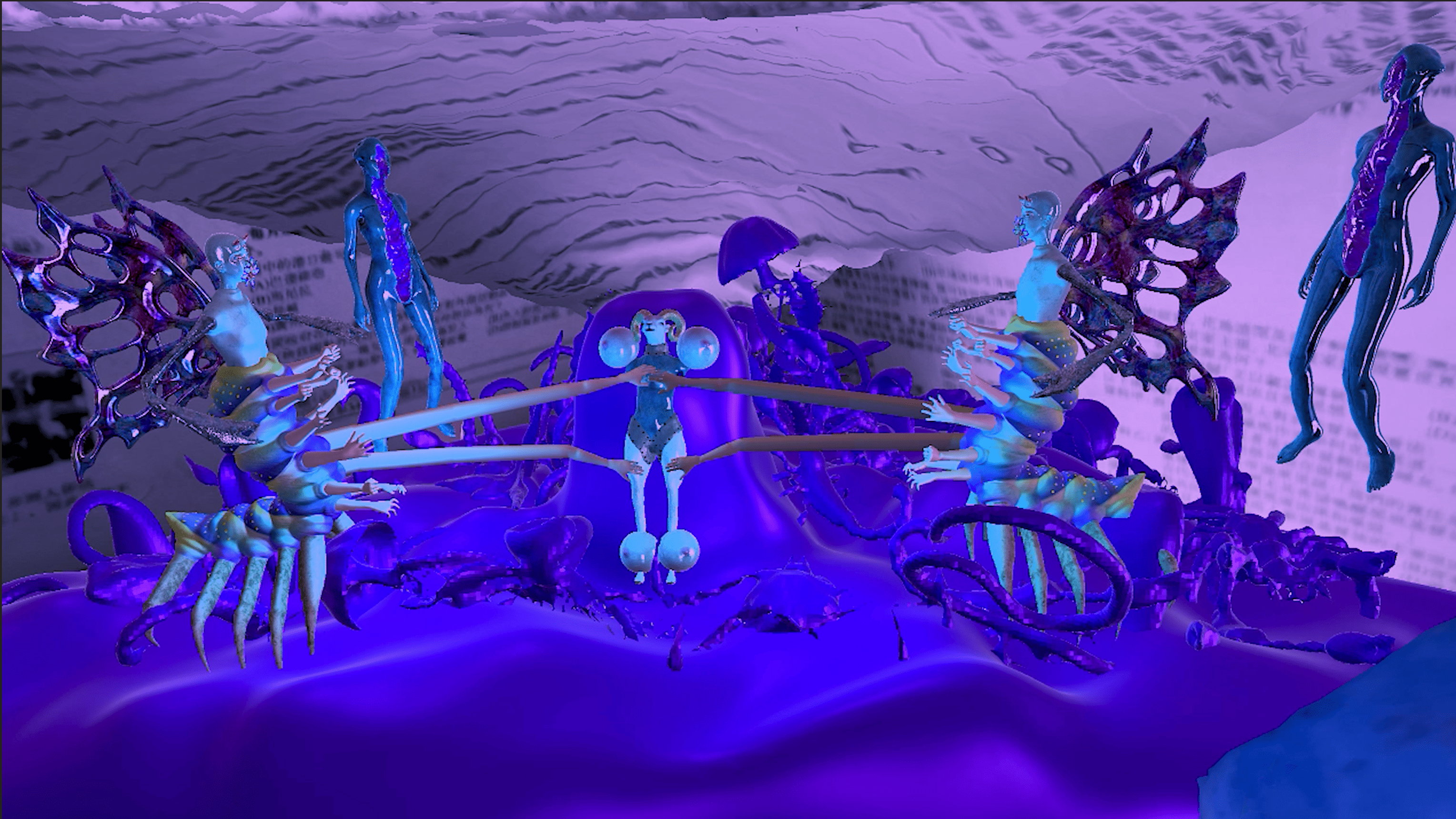7th SCM Research Colloquium 2024/25
Seminar
18 Mar 2025
3:30 p.m – 5:15 p.m
M6050 Screening Room 1, Level 6, Run Run Shaw Creative Media Centre
Free admission.
|

|
The SCM Research Colloquium takes place approximately once a month for taught postgraduate, graduate students, faculty and professionals from creative media and other related disciplines to present their recent research topic/project. The colloquium offers a great opportunity for ideas exchange and intellectual conversations about one’s work. Each session will feature two speakers, a graduate student/guest speaker and a faculty member.
Each presentation is about 30 minutes, followed by 15 minutes open discussion. Seminar introduction and Q&A will be hosted by Prof. Espen Aarseth or Prof. Richard Allen. No registration is needed and light refreshments are provided.
Seminar 7
18 March 2025, 3:30 p.m – 5:15 p.m
Problems and Promises of Collaboration in Art, Science, and Technology (art-science)
Janina HOTH
In theory, collaborations between artists and scientists hold a lot of potential in interdisciplinary research. Working together and combining artistic and scientific methods, theories, and tools can—potentially—transform knowledge production towards big goals of sustainability, digital agency, or social equity. This narrative has fueled the field since the beginning of contemporary art-science in the late 1950s. In this narrative, collaboration is usually applied as a taken-for-granted concept. The intricacies of working together—interactions and work plans, knowledge exchange and infrastructures—are rarely analyzed. But to understand the potential of social transformation through art-science research, an in-depth understanding of collaboration in theory and practice is necessary.
As an integral practice and key concept in art-science, collaboration is not self-explanatory. It relates real-life practices and processes of working together with abstract ideas of knowledge merge and a reunion between the fields. Theories and practices of collaboration are integrally intertwined but this connection is rarely discussed. Consequently, the collaboration concept remains vague and disconnected from its practices and processes.
Research between the arts and the sciences is a challenge when stakeholders share a common research goal and aim to combine research practices from both fields. In my presentation, knowledge exchange is analyzed as a process of adapting and translating disciplinary concepts towards finding broader interdisciplinary concepts which can accommodate the social, political, and cultural dimensions in knowledge production. The research between artists and scientists and their diverging concepts and knowledges are made visible in their interrelations and differences. The collaboration concept can then be reconceptualized from the perspectives of communities of enquiry and an ethics of care to better understand how artistic and scientific research can work together.

Artists and engineers brainstorming at CODE 2024 Hackathon in Bonn, Germany. Photo ©Janina Hoth
BIO : Janina is an interdisciplinary researcher interested in knowledge transfer in art and science. She recently completed her PhD on collaborations in art-science from the School of Creative Media, City University of Hong Kong. Her research interest began as a co-editor and research associate at “The Archive of Digital Art” (Department for Image Science, University for Continuing Education, Krems, Austria) where she co-developed online exhibitions and digital tools.
An Augmented Reality Installation to Metaphorically Represent the Causes, Manifestations, and Consequences of School Bullying in East Asia.
Luna, LIU Chang
In this talk, I will discuss the contributing factors, manifestations, and consequences of school bullying in East Asia. I will also introduce the AR installation we made to convey the aforementioned discoveries metaphorically. This work contains two distinct features. Firstly, it embodies the integration of AR technology and game design. I designed a virtual coin pusher game to metaphorically represent a type of parental psychology, wherein child-rearing is conceptualized as a gamble to elevate the parent’s social class. In addition, I developed several interactive animations to symbolically illustrate why such gambling intention and the pursuit of high rewards have become primary factors in exacerbating school bullying. Furthermore, I will elaborate on a novel AR narrative framework employed in this work, which visualizes the inner feelings of traumatized individuals through both the design of the virtual component and the spatial arrangement of the actual location where the trauma occurred. This work has yielded a publication at ISEA2024 and was shortlisted for the Hong Kong IFVA Awards 2024.

This AR artwork is designed to be viewed using an iPhone or iPad.

One of the interactive animations that symbolize school bullying
BIO : Luna Liu is a researcher and artist whose work focuses on childhood trauma—including domestic abuse, school bullying, and societal violence. She explores how these experiences shape survivors’ personalities, interpersonal relationships, and self-perceptions. Additionally, she used media such as Mixed Reality, Virtual Reality, and Augmented Reality to convey the inner feelings of survivors, fostering reflection and discussion on diverse adverse childhood experiences. Her artwork was awarded the Global Culture Prize at the Stuttgart Film Winter and has been shortlisted twice for the Hong Kong IFVA Awards.